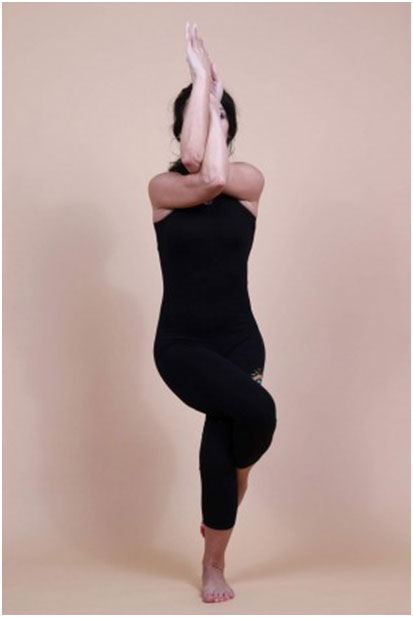What is life style change according to yoga?
 A yogic life style lived in joy and satisfaction forms the core of this life style change. It is an attitudinal change at the psychological level. If we look at all the risk factors for CHD, one can see that it requires a total change in one’s attitude to refrain totally from smoking, change the food habits, and lead a stress free life. Otherwise even this forced life style change which is usually practiced after an event of CHD could become a cause for stress and suppression. Hence yoga recommends a basic change in our attitude towards right living. Let us see how yoga can be a tool for this life style change to prevent or reverse heart disease.
A yogic life style lived in joy and satisfaction forms the core of this life style change. It is an attitudinal change at the psychological level. If we look at all the risk factors for CHD, one can see that it requires a total change in one’s attitude to refrain totally from smoking, change the food habits, and lead a stress free life. Otherwise even this forced life style change which is usually practiced after an event of CHD could become a cause for stress and suppression. Hence yoga recommends a basic change in our attitude towards right living. Let us see how yoga can be a tool for this life style change to prevent or reverse heart disease.
Yoga, not only provides the philosophical or logical back up in the form of right concepts to answer why one should lead a life of moderation with control over one’s instinctual behavioural patterns, but also provides highly evolved time tested techniques for healthy living. For example, Yama and Niyama, the first two components of Aútánga yoga described by Patanjali, the concepts of Karma Yoga from Bhagavat Gèta, Bhakti Yoga from Narada Bhakti Sutra and Jnana Yoga from Upaniúads addresses the basic concept about one’s purpose and meaning of life style. Starting from many do’s and don’ts (Niyama and Yama) to culture the mind during interaction in the society yoga gives simple norms for right living, Yoga helps one to climb up the pedestals to the climax of Jnána or Mokúha where the individual could live in perfect harmony and bliss unperturbed by the waves of joys or depression of life.
GARUDÁSANA

PRACTICE
- The right thigh should be in front of the left thigh and top of the right foot should rest on the calf of the left leg.
- Bend the elbows and bring them in front of the chest.
- Twist the forearm around the other with the left elbow remaining below.
- Place the palms together to resemble an eagle’s beak.
- Slowly bend the left knee and lower the body until the tip of the right big toe touches the floor. Keep the eye focussed on the fixed point.
- Maintain the position for about a minute.
- Repeat the same with the other side.
- Relax in Tadasana.
Acknowledgement to:
- CYT / ATTC Students of Union Yoga Ayurveda Singapore
- Swami Vivekananda Yoga Prakashana Trust, Bangalore
Disclaimer
Yoga Ayurveda Therapy is Complementary Medicine and doesn't alternates any conventional treatment.
Yoga-Ayurveda Therapy needs physical assistance which may need physical touch. You can ask teacher or therapist not to give physical touch or assistance and based on whatever you choose, our teacher or therapist will follow the instructions. Any point you want to change the preference, then please inform teacher or therapist and management in writing. You will take responsibility of your decision and will not hold Union Yoga Ayurveda responsible for any kind of damage.
All kind of Yoga Ayurveda teaching and therapy can cause certain injuries and you are accepting those injuries. Signing up for the therapy or yoga courses means that you are aware of the probable injuries.
Union Yoga Ayurveda (Union Centre Pte Ltd) and its staff are not liable or responsible for any injuries caused during the session which are visible or not visible, physical or hormonal or mental. You as client take full responsibility of your own decision and will not claim any kind of compensation in terms of money or any resources for the damage caused because of due process.
Related Topics
- Yoga Therapy & Common Ailments
- Diabetes Mellitus
- Yoga & Glaucoma
- Chronic Myeloid Leukemia
- Gastro-Esophageal Reflux / Gastritis
- High Blood Pressure
- For Anxiety neurosis, Depressions etc
- For Neurological issues
- Cataract and short / long Sightedness
- Scoliosis / Herneated disc / Sciatica
- Menstrual Issues

